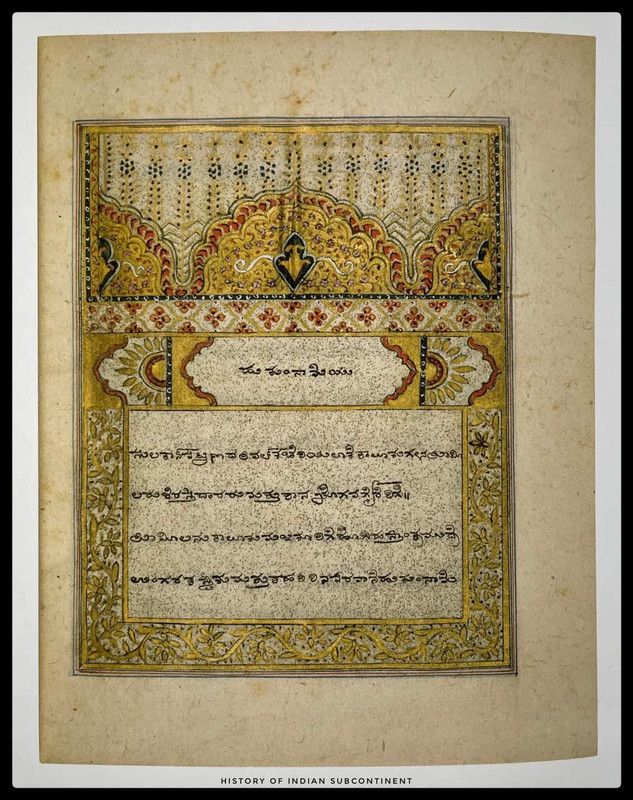
Under Tipu Sultan, the state of Mysore was one
of the most commercially prosperous regions
of the subcontinent, exporting vast quantities of
cloth, rice, gold, silver, sandalwood, cinnamon,
coconuts and elephants to both local and foreign merchants. He personally oversaw the various commercial and administrative departments of Mysore and composed official manuals outlining the instructions and regulations that his court officials should follow
(hukmnamas).
Even in Tipu's own lifetime, George Ill owned an English translation of one of his hukmnama texts, procured by an Englishman during the third Anglo-Mysore War, which was published in 1792 as Mysorean Revenue Regulations, and which the King had bound in red leather and gold-stamped with his royal cipher. This pristine volume is a Kannada translation of one of Tip's hukmnamas relating to the accounts and land grants of a monastery written on high-quality gold-flecked paper.
While Persian was the court language of Mysore, Kannada was the language used by Tip's many Hindu courtiers who prospered in the service of their Muslim overlord. Its frontispiece is illuminated in the Islamic style but in a distinctly southern Indian idiom and even the calligraphy, in telugu script (read left to right), reflects the hybrid nature of Tip's court since it is written with a slight right-to-left slant, presumably by someone whose first language was Persian or Urdu.